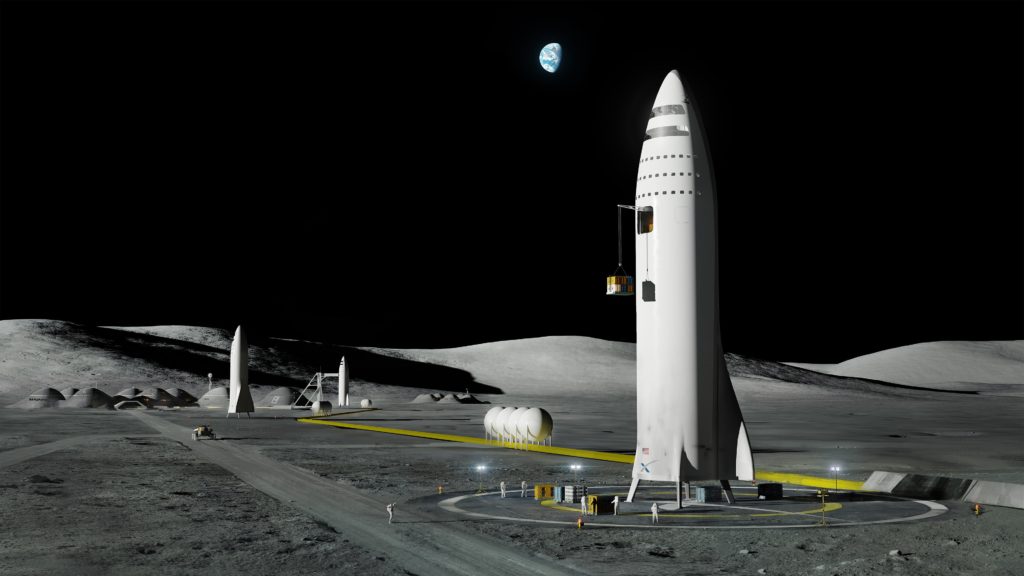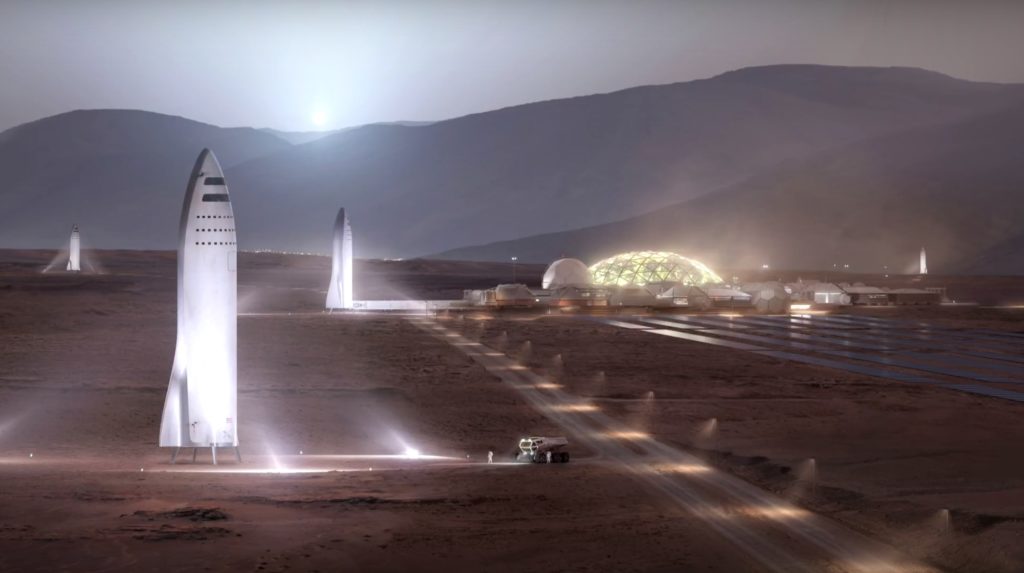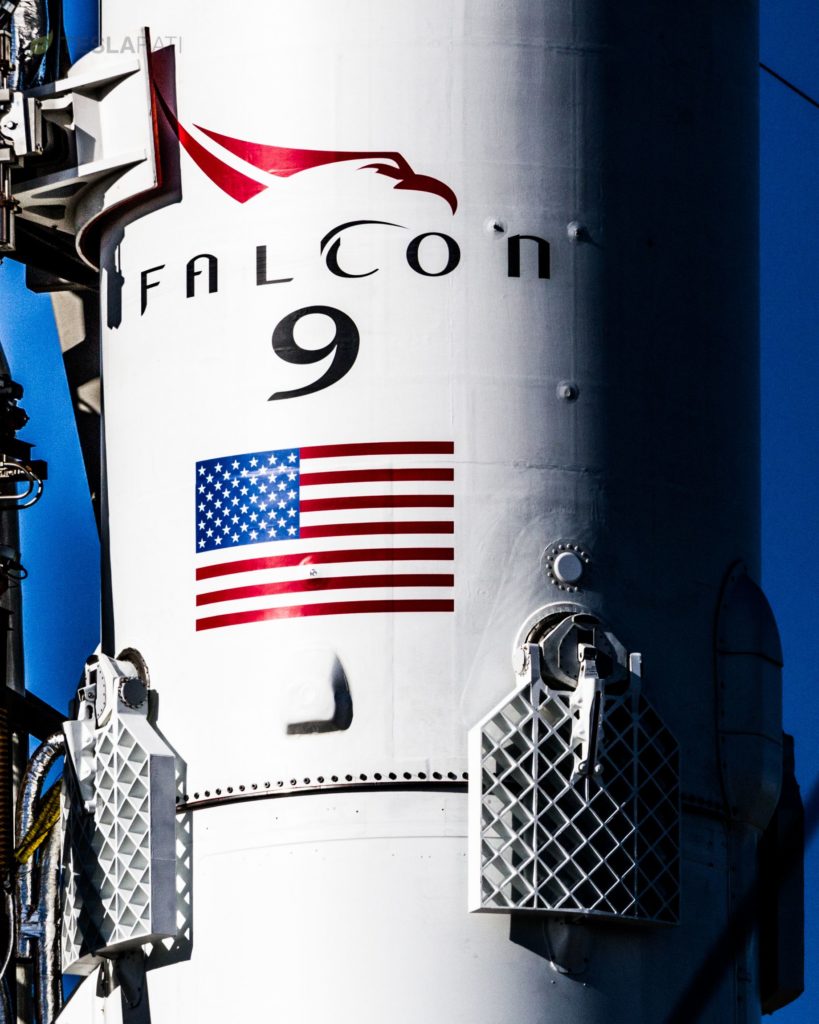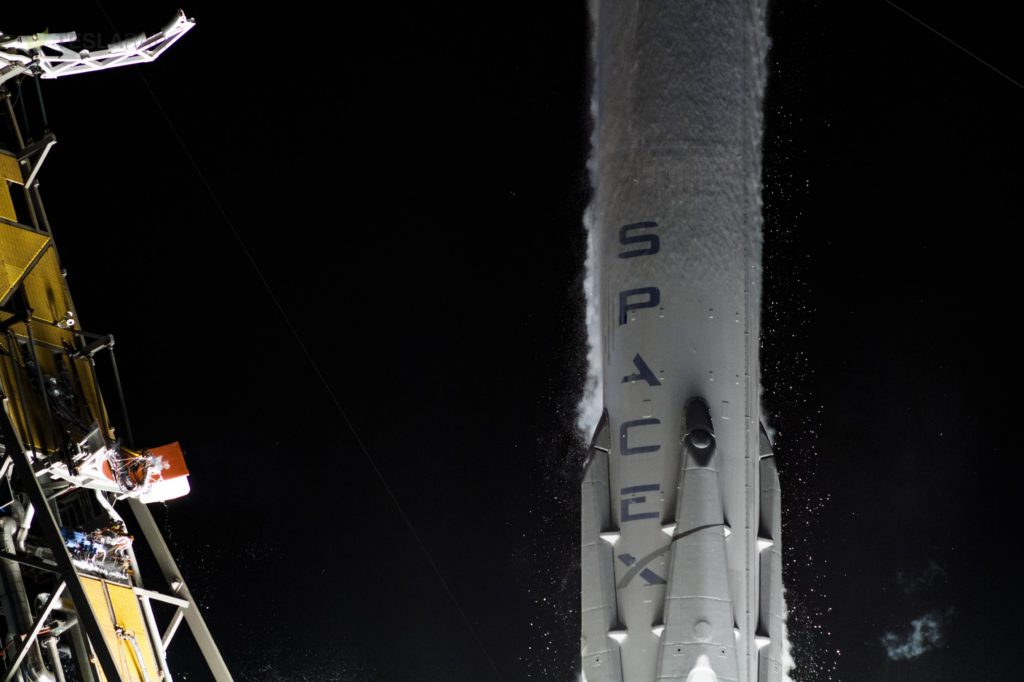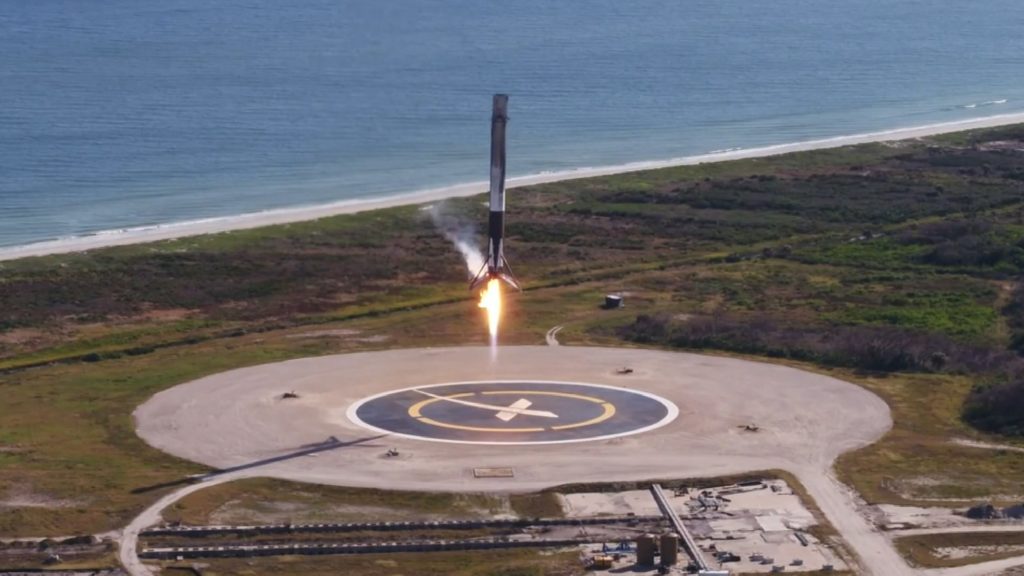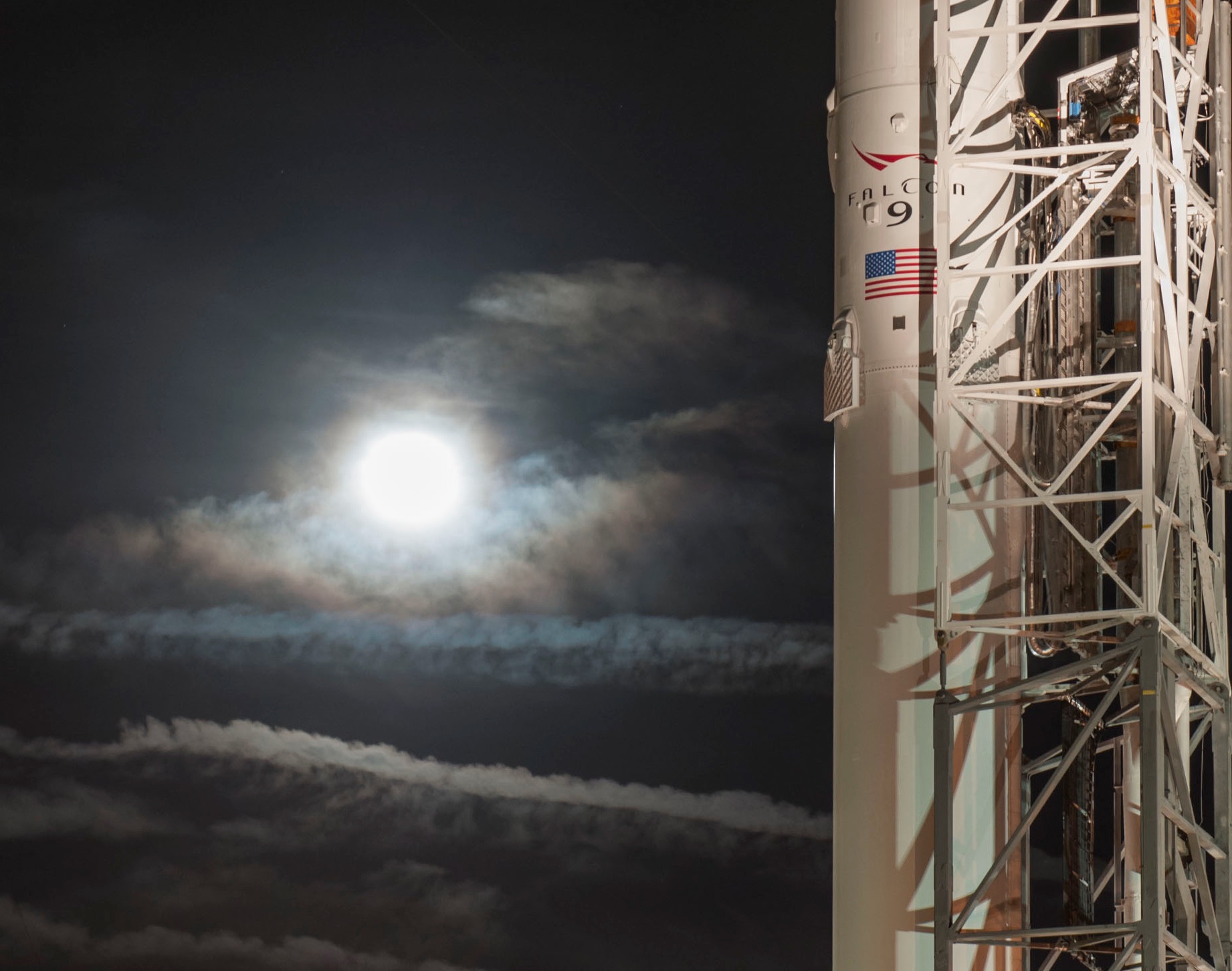
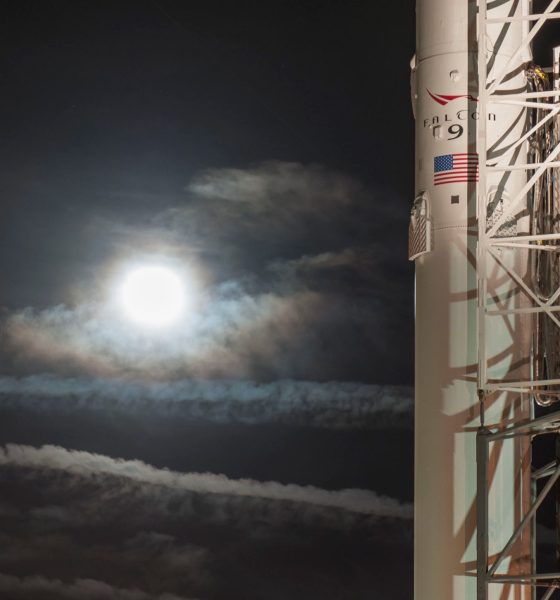
News
SpaceX talks Moon mission as strategic stepping stone for Mars colony
Josh Brost, Senior Director of SpaceX’s Government Business Development was in attendance at a civil spaceflight conference in Washington D.C. yesterday, January 18, and provided a number of interesting details about SpaceX’s upcoming activities in 2018. Perhaps most intriguingly, he reiterated SpaceX’s interest in enabling exploration of the Moon and Mars, while also clarifying that the upcoming Falcon 9 upgrade will be the last major change to the vehicle for the indefinite future.
Although the audience may have been more focused on SpaceX’s potential lunar prospects, Brost provided a vision similar to CEO Elon Musk’s common-knowledge goal of Martian (and interplanetary) colonization. This lunar focus was in part evidenced by a pointed question from an audience member that triggered Brost’s subsequent suggestion that the Moon could be a more logical starting place for the company as it ramps up its deep space efforts and gradually slips beyond Earth orbit. This strategic and calculated extension of the aspirations of the launch company’s famous founder is a rational attempt to position SpaceX in ways that allow the company to derive as much value as possible from the US government’s recently revived interest in returning the US and its astronauts to the Moon.
- SpaceX’s 2017 BFS (now Starship) delivers cargo to a large lunar base. (SpaceX)
- Starship and a Martian city, circa 2017. (SpaceX)
To a large extent, his comments mesh with the vision Elon Musk reiterated at 2017’s September IAC.
SpaceX’s next-generation heavy-lift rocket and spaceship (BFR and BFS) are being designed to carry 150 metric tons into low Earth orbit while still recovering both the first and second stages, and will be purpose-built for rapid and complete reusability. BFR and BFS are also being intentionally designed to be relatively destination-agnostic. In other words, BFS will be capable of transporting cargo and eventually crew to a number of destinations in the solar system, be it the Moon, Mars, or beyond. The outer planets are almost certainly off limits for crew due to the sheer length of any journey beyond the orbit of Mars, but BFR, as it was discussed last year, would be capable of transporting unprecedented amounts of cargo almost anywhere in the solar system. Reusability is, of course, paramount to SpaceX’s operational intent with BFR/BFS; unless a very lucrative offer is made, it is highly unlikely that SpaceX will even consider expendable missions, thus partially limiting what the next-gen vehicle will be capable of.
Still, it will be an incredibly capable rocket even with full reusability. Add in the potential promise of mature in-situ resource utilization (ISRU), more simply the production of methane and oxygen propellant at the destination, and it will open a hundred entirely new worlds to serious scientific, exploratory, and economic prospecting throughout the solar system.
What’s next?
The question, then, is “when?” While Brost did not specifically provide any sort of timeline for BFR, aside from a brief statement on its readiness in “a few years,” he did describe in some detail the imminent end of serious Falcon 9 upgrades. A continual stream of upgrades and modifications has been one of the only real constants with SpaceX’s Falcon 9 rocket: the original Falcon 9 is in almost every respect a completely different rocket when compared to the Falcon 9 Full Thrust (FT/1.2) of the present. However, one final leap is expected for Falcon 9, this time almost exclusively intended to improve the vehicle’s reliability and reusability as SpaceX rapidly approaches its first flights of Crew Dragon and dreams of rapid and repeated booster reuse.
While it was a small detail in an obscure sentence of one of several hour-long discussions, Brost specifically stated this:
Brost: with Block 5, goal it to lock down the design and fly the vehicle at very high flight rates. Innovation will focus on designing and testing BFR.
— Jeff Foust (@jeff_foust) January 18, 2018
This is arguably the most exciting tidbit provided to us by SpaceX. While it was undeniably vague and rather less than crystal-clear, it can be interpreted as something like this: once Block 5 has been introduced and begun to fly and refly both regularly and successfully, the vast majority of SpaceX’s launch vehicle development expertise will begin to focus intensely on the development and testing of BFR and BFS.
Statements from just last week made by SpaceX President Gwynne Shotwell strengthen this intuitive leap considerably, because BFR and BFS are liable to require a considerable amount of attention as they proceed through design maturation and eventually begin physical hardware testing in Texas.
Shotwell’s comments implied that SpaceX’s Boca Chica launch facilities, currently under construction, would be ready to support “vehicle tests” as early as late 2018/early 2019. Comments from earlier in 2017 indicate that SpaceX (and Shotwell) perceive Boca Chica as a near-perfect location for BFR launches (and thus BFR testing, as well). Finally, Brost’s implication that SpaceX’s exceptional team of brilliant and innovative launch vehicle engineers would be refocused on BFR soon after Block 5 was stable also meshes with this rough timeline. If Falcon 9 Block 5 does indeed debut within the “next few months” as Brost stated, it will have likely reached some level of design and operational maturity by the end of 2018, assuming SpaceX’s expected launch cadence.
- SpaceX’s Falcon 9 ahead of the launch of Zuma. (Tom Cross/Teslarati)
- A Falcon 9 lifts off from LC-40 carrying the highly secretive Zuma spacecraft. Hispasat 30W will launch from the same pad in just a few days. (Tom Cross)
- Falcon 9 1035 conducts its second landing after successfully launching CRS-13 on December 15. Improved reusability will be a huge focus of SpaceX in 2018. (NASA)
As of right now, SpaceX is already looking at a very busy February, and currently has as many as three commercial launches scheduled within a period of maybe three weeks (GovSat-1, PAZ, and Hispasat), maybe even four if Falcon Heavy completes its first static fire later this weekend. Musk estimated that SpaceX would complete 30 missions in 2018, and a cadence anywhere near three launches per month (let alone four) would easily push SpaceX past that goal and provide the company dozens of opportunities to test, launch, recover, and relaunch their new Block 5 version of Falcon 9. As such, while BFR is probably not going to reach fully integrated hardware development or testing in 2018, it is certainly a distinct possibility, and 2019 is far more promising for the company’s interplanetary aspirations.
For now, SpaceX’s 2018 focus is quite explicitly centered on ensuring the reliability of its Crew Dragon – set to debut NET August 2018 – and Falcon 9 as it strives to complete the development of both vehicles. Up next on the company’s busy schedule is another attempt at Falcon Heavy’s inaugural static fire on Saturday afternoon, as well as the flight-proven launch of GovSat-1/SES-16, currently NET January 30.
Follow along live as launch photographer Tom Cross and I cover these exciting proceedings live from both coasts.
Teslarati – Instagram – Twitter
Tom Cross – Instagram
Eric Ralph – Twitter

Elon Musk
Tesla Optimus shows off its newest capability as progress accelerates

Tesla Optimus showed off its newest capability as progress on the project continues to accelerate toward an ultimate goal of mass production in the coming years.
Tesla is still developing Optimus and preparing for the first stages of mass production, where units would be sold and shipped to customers. CEO Elon Musk has always marketed the humanoid robot as the biggest product in history, even outside of Tesla, but of all time.
He believes it will eliminate the need to manually perform monotonous tasks, like cleaning, mowing the lawn, and folding laundry.
However, lately, Musk has revealed even bigger plans for Optimus, including the ability to relieve humans of work entirely within the next 20 years.
JUST IN: Elon Musk says working will be ‘optional’ in less than 20 years because of AI and robotics. pic.twitter.com/l3S5kl5HBB
— Watcher.Guru (@WatcherGuru) November 30, 2025
Development at Tesla’s Artificial Intelligence and Robotics teams has progressed, and a new video was shown of the robot taking a light jog with what appeared to be some pretty natural form:
Just set a new PR in the lab pic.twitter.com/8kJ2om7uV7
— Tesla Optimus (@Tesla_Optimus) December 2, 2025
Optimus has also made several public appearances lately, including one at the Neural Information Processing Systems, or NeurIPS Conference. Some spectators shared videos of Optimus’s charging rig, as well as its movements and capabilities, most interestingly, the hand:
You have to hand it to Elon 🤟 pic.twitter.com/fZKDlmGAbe
— Ric Burton · NeurIPS 2025 (@_ricburton) December 2, 2025
The hand, forearm, and fingers have been one of the most evident challenges for Tesla in recent times, especially as it continues to work on its 3rd Generation iteration of Optimus.
Musk said during the Q3 Earnings Call:
“I don’t want to downplay the difficulty, but it’s an incredibly difficult thing, especially to create a hand that is as dexterous and capable as the human hand, which is incredible. The human hand is an incredible thing. The more you study the human hand, the more incredible you realize it is, and why you need four fingers and a thumb, why the fingers have certain degrees of freedom, why the various muscles are of different strengths, and fingers are of different lengths. It turns out that those are all there for a reason.”
The interesting part of the Optimus program so far is the fact that Tesla has made a lot of progress with other portions of the project, like movement, for example, which appears to have come a long way.
However, without a functional hand and fingers, Optimus could be rendered relatively useless, so it is evident that it has to figure this crucial part out first.
Elon Musk
Elon Musk and Tesla try to save legacy automakers from Déjà vu
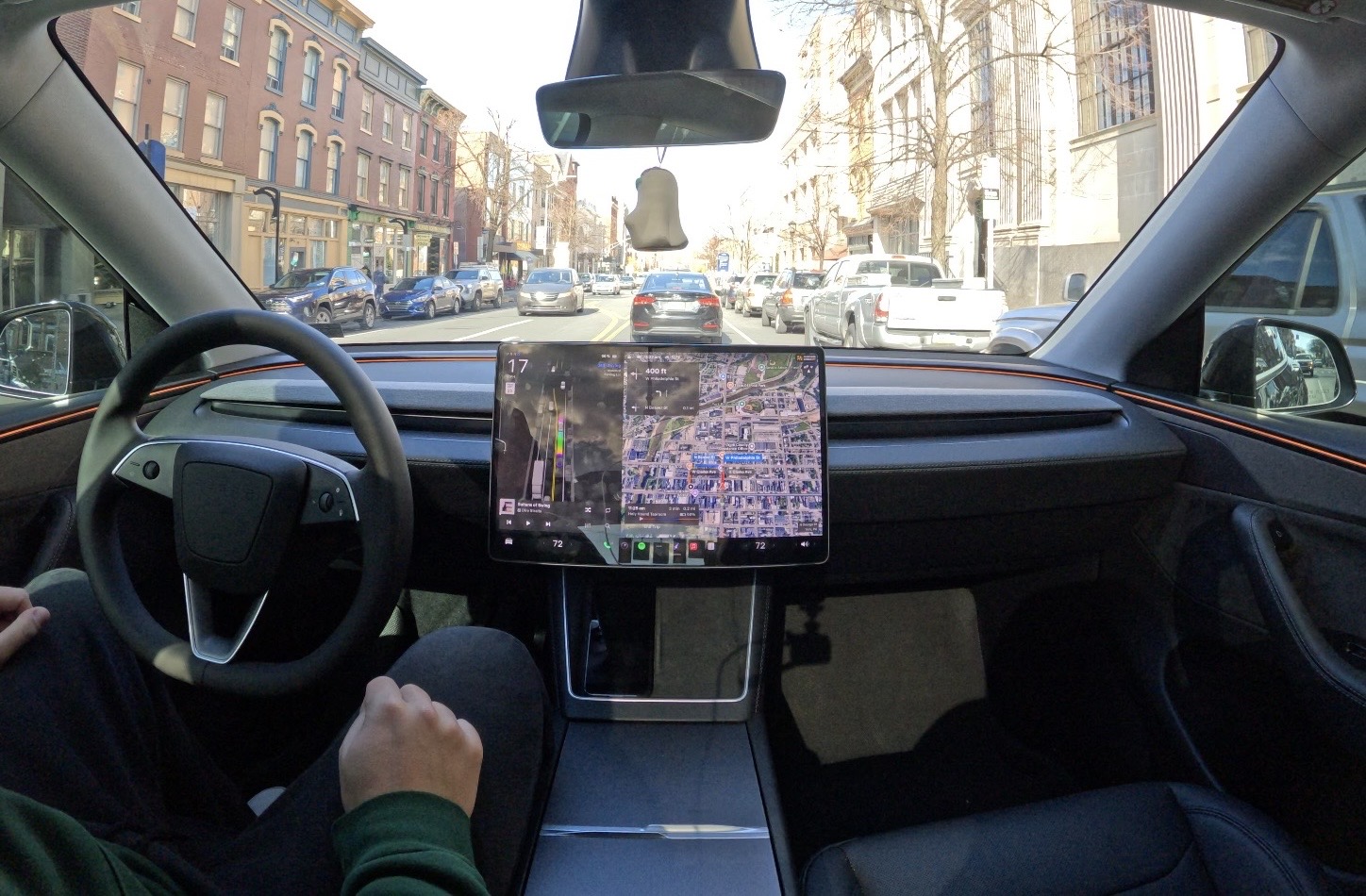
Elon Musk said in late November that he’s “tried to warn” legacy automakers and “even offered to license Tesla Full Self-Driving, but they don’t want it,” expressing frustration with companies that refuse to adopt the company’s suite, which will eventually be autonomous.
Tesla has long established itself as the leader in self-driving technology, especially in the United States. Although there are formidable competitors, Tesla’s FSD suite is the most robust and is not limited to certain areas or roadways. It operates anywhere and everywhere.
The company’s current position as the leader in self-driving tech is being ignored by legacy automakers, a parallel to what Tesla’s position was with EV development over a decade ago, which was also ignored by competitors.
The reluctance mirrors how legacy automakers initially dismissed EVs, only to scramble in catch-up mode years later–a pattern that highlights their historical underestimation of disruptive innovations from Tesla.
Elon Musk’s Self-Driving Licensing Attempts
Musk and Tesla have tried to push Full Self-Driving to other car companies, with no true suitors, despite ongoing conversations for years. Tesla’s FSD is aiming to become more robust through comprehensive data collection and a larger fleet, something the company has tried to establish through a subscription program, free trials, and other strategies.
Tesla CEO Elon Musk sends rivals dire warning about Full Self-Driving
However, competing companies have not wanted to license FSD for a handful of speculative reasons: competitive pride, regulatory concerns, high costs, or preference for in-house development.
Déjà vu All Over Again
Tesla tried to portray the importance of EVs long ago, as in the 2010s, executives from companies like Ford and GM downplayed the importance of sustainable powertrains as niche or unprofitable.
Musk once said in a 2014 interview that rivals woke up to electric powertrains when the Model S started to disrupt things and gained some market share. Things got really serious upon the launch of the Model 3 in 2017, as a mass-market vehicle was what Tesla was missing from its lineup.
This caused legacy companies to truly wake up; they were losing market share to Tesla’s new and exciting tech that offered less maintenance, a fresh take on passenger auto, and other advantages. They were late to the party, and although they have all launched vehicles of their own, they still lag in two major areas: sales and infrastructure, leaning on Tesla for the latter.
I’ve tried to warn them and even offered to license Tesla FSD, but they don’t want it! Crazy …
When legacy auto does occasionally reach out, they tepidly discuss implementing FSD for a tiny program in 5 years with unworkable requirements for Tesla, so pointless. 🤷♂️
🦕 🦕
— Elon Musk (@elonmusk) November 24, 2025
Musk’s past warnings have been plentiful. In 2017, he responded to critics who stated Tesla was chasing subsidies. He responded, “Few people know that we started Tesla when GM forcibly recalled all electric cars from customers in 2003 and then crushed them in a junkyard,” adding that “they would be doing nothing” on EVs without Tesla’s efforts.
Companies laughed off Tesla’s prowess with EVs, only to realize they had made a grave mistake later on.
It looks to be happening once again.
A Pattern of Underestimation
Both EVs and self-driving tech represent major paradigm shifts that legacy players view as threats to their established business models; it’s hard to change. However, these early push-aways from new tech only result in reactive strategies later on, usually resulting in what pains they are facing now.
Ford is scaling back its EV efforts, and GM’s projects are hurting. Although they both have in-house self-driving projects, they are falling well behind the progress of Tesla and even other competitors.
It is getting to a point where short-term risk will become a long-term setback, and they may have to rely on a company to pull them out of a tough situation later on, just as it did with Tesla and EV charging infrastructure.
Tesla has continued to innovate, while legacy automakers have lagged behind, and it has cost them dearly.
Implications and Future Outlook
Moving forward, Tesla’s progress will continue to accelerate, while a dismissive attitude by other companies will continue to penalize them, especially as time goes on. Falling further behind in self-driving could eventually lead to market share erosion, as autonomy could be a crucial part of vehicle marketing within the next few years.
Eventually, companies could be forced into joint partnerships as economic pressures mount. Some companies did this with EVs, but it has not resulted in very much.
Self-driving efforts are not only a strength for companies themselves, but they also contribute to other things, like affordability and safety.
Tesla has exhibited data that specifically shows its self-driving tech is safer than human drivers, most recently by a considerable margin. This would help with eliminating accidents and making roads safer.
Tesla’s new Safety Report shows Autopilot is nine times safer than humans
Additionally, competition in the market is a good thing, as it drives costs down and helps innovation continue on an upward trend.
Conclusion
The parallels are unmistakable: a decade ago, legacy automakers laughed off electric vehicles as toys for tree-huggers, crushed their own EV programs, and bet everything on the internal-combustion status quo–only to watch Tesla redefine the industry while they scrambled for billions in catch-up capital.
Today, the same companies are turning down repeated offers to license Tesla’s Full Self-Driving technology, insisting they can build better autonomy in-house, even as their own programs stumble through recalls, layoffs, and missed milestones. History is not merely rhyming; it is repeating almost note-for-note.
Elon Musk has spent twenty years warning that the auto industry’s bureaucratic inertia and short-term thinking will leave it stranded on the wrong side of technological revolutions. The question is no longer whether Tesla is ahead–it is whether the giants of Detroit, Stuttgart, and Toyota will finally listen before the next wave leaves them watching another leader pull away in the rear-view mirror.
This time, the stakes are not just market share; they are the very definition of what a car will be in the decades ahead.
News
Waymo driverless taxi drives directly into active LAPD standoff
No injuries occurred, and the passengers inside the vehicle were safely transported to their destination, as per a Waymo representative.
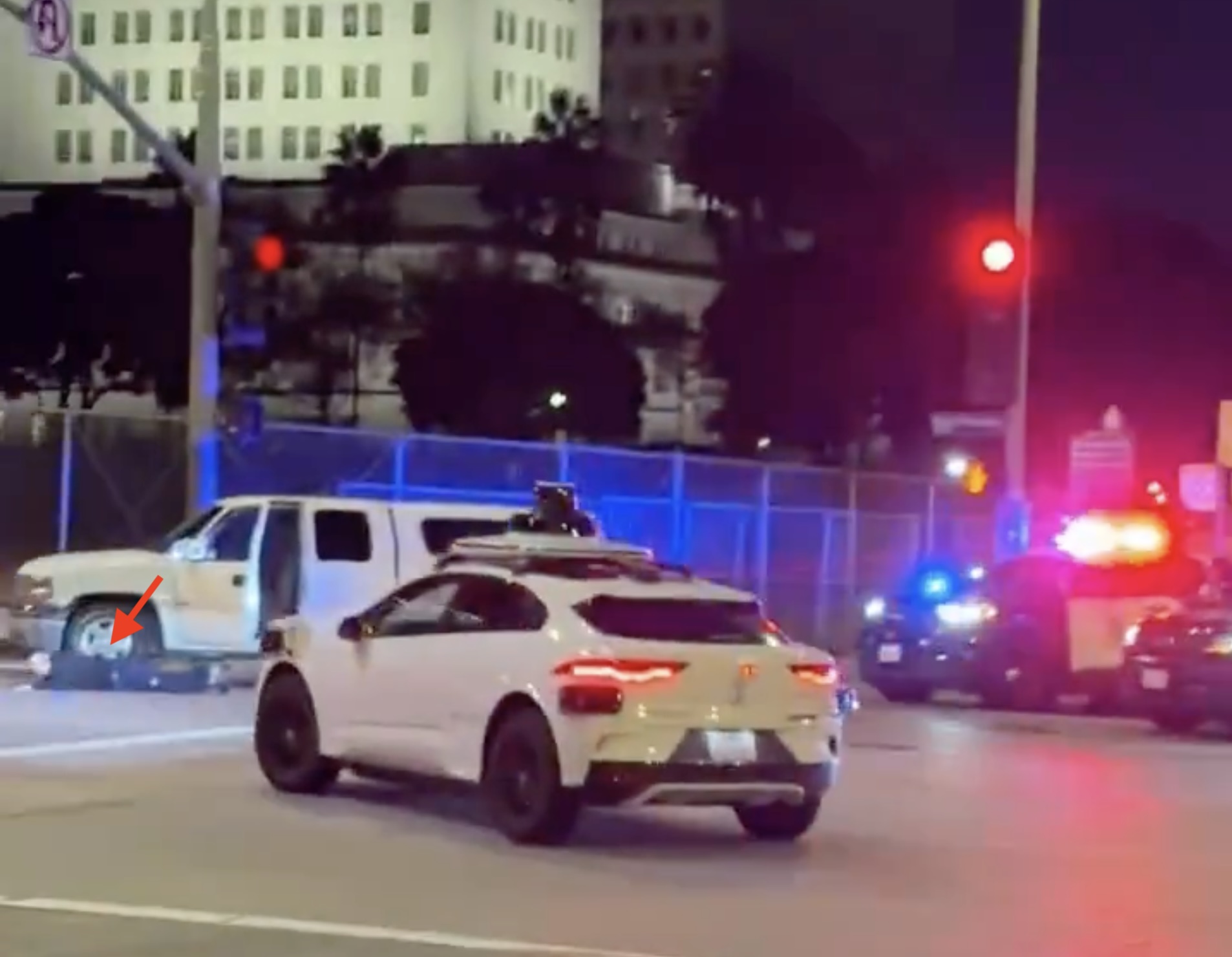
A video posted on social media has shown an occupied Waymo driverless taxi driving directly into the middle of an active LAPD standoff in downtown Los Angeles.
As could be seen in the short video, which was initially posted on Instagram by user Alex Choi, a Waymo driverless taxi drove directly into the middle of an active LAPD standoff in downtown Los Angeles.
The driverless taxi made an unprotected left turn despite what appeared to be a red light, briefly entering a police perimeter. At the time, officers seemed to be giving commands to a prone suspect on the ground, who looked quite surprised at the sudden presence of the driverless vehicle.
People on the sidewalk, including the person who was filming the video, could be heard chuckling at the Waymo’s strange behavior.
The Waymo reportedly cleared the area within seconds. No injuries occurred, and the passengers inside the vehicle were safely transported to their destination, as per a Waymo representative. Still, the video spread across social media, with numerous netizens poking fun at the gaffe.
Others also pointed out that such a gaffe would have resulted in widespread controversy had the vehicle involved been a Tesla on FSD. Tesla is constantly under scrutiny, with TSLA shorts and similar groups actively trying to put down the company’s FSD program.
A Tesla on FSD or Robotaxi accidentally driving into an active police standoff would likely cause lawsuits, nonstop media coverage, and calls for a worldwide ban, at the least.
This was one of the reasons why even minor traffic infractions committed by the company’s Robotaxis during their initial rollout in Austin received nationwide media attention. This particular Waymo incident, however, will likely not receive as much coverage.
